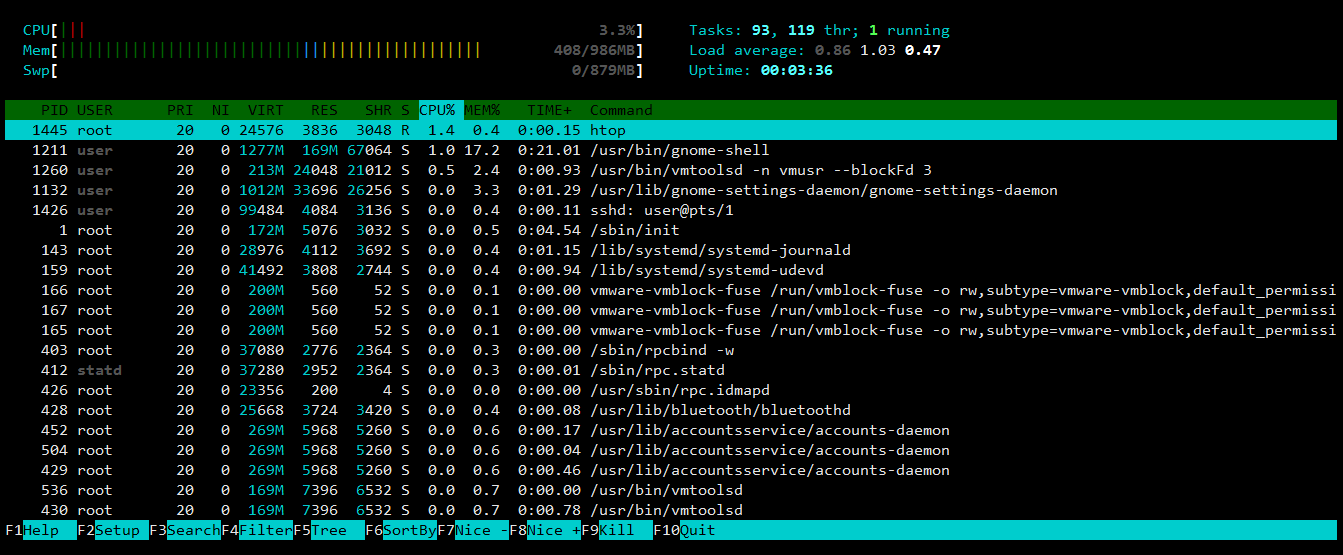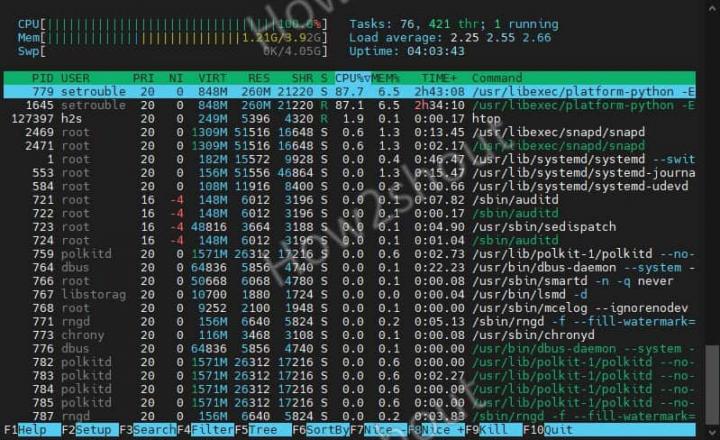

For example, the read and write rate can be displayed on the data carrier. The columns in the middle area can be completely restructured. For example, an average display can be displayed in the upper area instead of the utilization of the individual CPU cores, or the current time or the hostname can be displayed. The adjustments range from changing the color scheme to completely rebuilding the individual areas. In particular, the various key combinations that can be used to operate htop are described here.į2 for Setup: Htop can be adjusted very extensively. There are a few common keyboard shortcuts we can use to manage htop, here are those:į1 for Help: When we press the F1 key, it opens a brief htop help page. This will open the interface of the tool where you can have a glance at the current process and system resources. To start this tool we just need to open the command terminal and then run: htop There are many options available to use with htop to see what are those along with the details of the current installed hTop version, here are the commands: htop -versionĪll the options or arguments we can use with this command-line tool will appear along with the detail of the current version.ĥ. Hence, we don’t need to add any third-party repository, just use the APT package manager command given below and you are done. Just like the Top tool that is available through the default system repository of Ubuntu, htop can also get from the base repo. Install htop viewer on Ubuntu 22.04 | 20.04 Although, it is not necessary, if you have not done this for a while then it is recommended.

Let’s start by running the system update command to install the available updates for our Ubuntu along with refreshing of repository cache.

Log into your server with root access via SSH.It comes pre-installed on most of our Shared Hosting and Shared Reseller plans! Note: check your server before installing htop. For example if you are running htop and you would like to view the programs using the most RAM, you would hit F6 on your keyboard and select the MEM% filter then hit enter. Htop provides many filters that you can sort through to show only the information you are looking for. Unlike the top command, htop will provide all of the processes running and not just the top resource abusing ones.

The htop command line tool is very useful for locating what programs are using up more resources than intended.


 0 kommentar(er)
0 kommentar(er)
